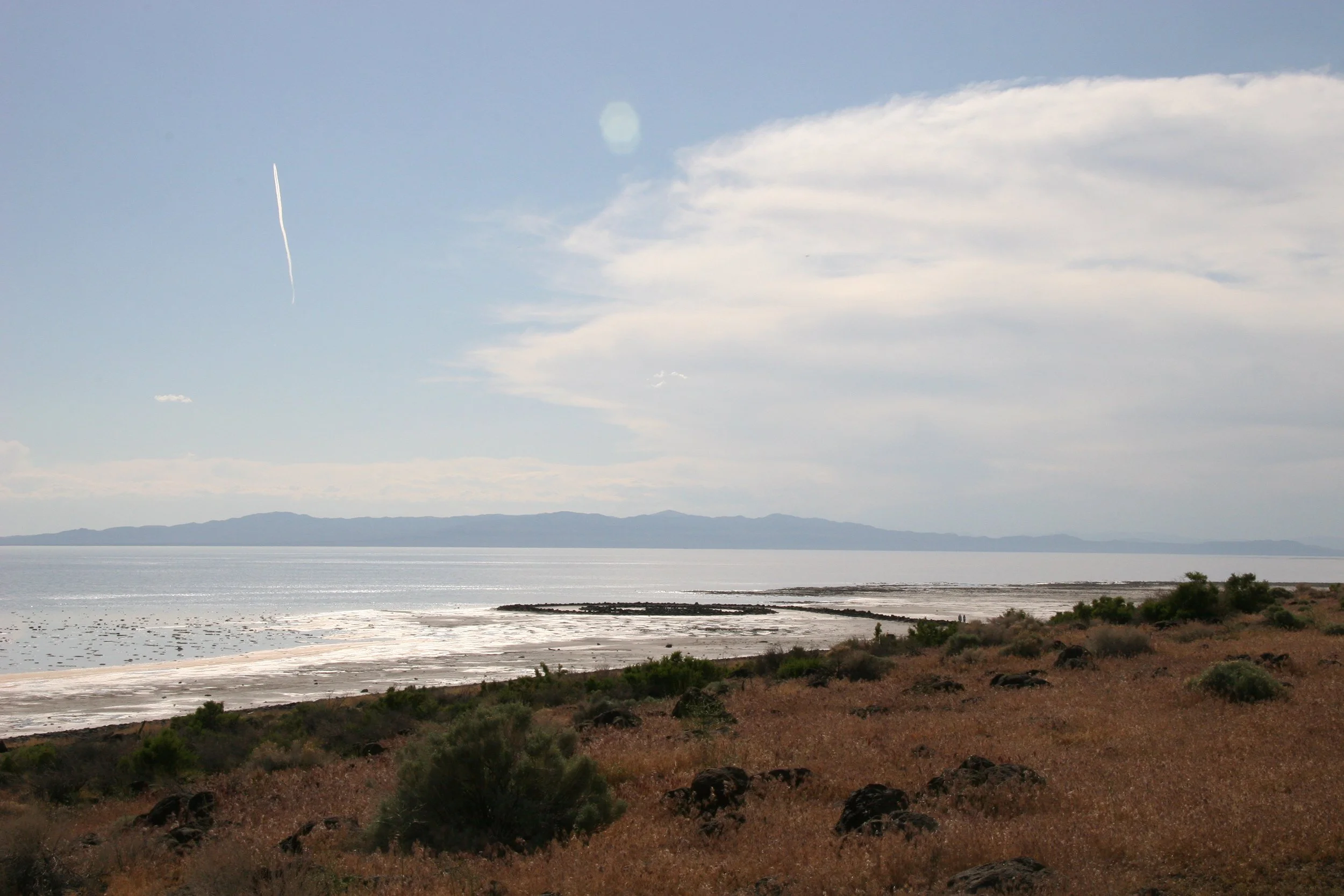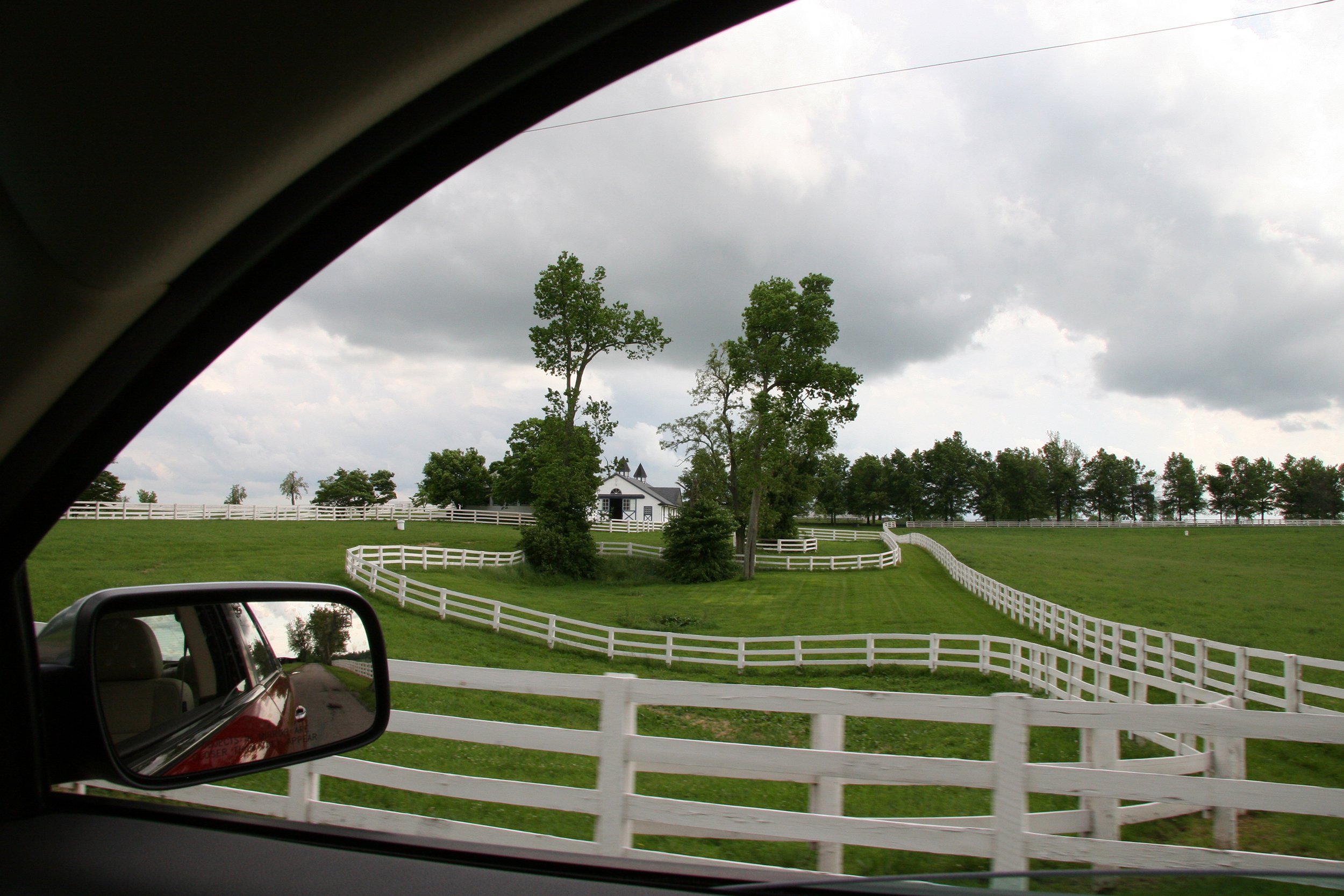
Page 1 of 7
Rozel Point, Utah
Out where the dreams are high, out where the wind don't blow, out here the good girls die and the sky won't snow
Spiral Jetty is Robert Smithson's (almost) 30 year old (and still highly influential) earthwork art piece and one of the places I have wanted to see for just about as long as I can remember. Located truly in the middle of nowhere, off almost impassable dirt roads in a corner of Utah where the streets have no name, it is a pilgrimage site like no other and far different (though still as impressive) as I expected it to be.
To say that getting to Spiral Jetty is hard would probably be an understatement. From Salt Lake City (and the closest major airport) you need to take the 15 Freeway north to Brigham City, then Utah Route 83 west to Lampo Junction, following signs to and then past Golden Spike National Historic Park. After the Golden Spike Visitors Center the roads (and there are a few different ones) start to turn to passable gravel, then dirt, then a combination of dirt and rocks that might better be described as an impassable gulley and not a road. Luckily my rental car was upgraded (without my consent) to an SUV, and even then it wasn't all that happy for making me drive it to the middle of nowhere just to see a bunch of rocks that some artist decided to have dropped into the Great Salt Lake. And while the drive was not especially fun (the word hellish comes to mind), the road and journey there was really a required and important part of the experience. The road started along fields and ranches that got increasingly arid and rocky as the lake got nearer. And while distant violent thunderstorms loomed, the first view of the lake was awash in sun, the water appearing as pure reflection, the far off mountains resembling an imagined moonscape more than any other place I have ever stood. There, above these shores was a tiny descriptive sign and, down a quick trail, Spiral Jetty itself.
Local New Jersey artist Smithson picked Rozel Point for its rocks and water, one of which was hard to find that day. The Great Salt Lake is always in flux, its water level rises and falls in cycles and seasons and Spiral Jetty has only really been visible again these past few years after spending years and decades submerged under the salty water. During my visit the water had receded even farther exposing the salty lake bed, and while I was a bit disappointed to not see the jetty under perfect water level conditions, I received compensation by getting to explore that salty lake bed, complete with all of the beautiful complex little tessellations that one could ever want or hope for.
Spiral Jetty was Smithson's masterpiece and the work he is remembered for. He died shortly after its completion in a helicopter accident surveying another earthwork site in Texas (and not at Spiral Jetty as I was once led to believe). Today Spiral Jetty lives on (like apparently most things, it is now owned by New York's own Dia Art Empire) and the work remains as influential and important as ever. And since virtually no one ever gets all the way out to Rozel Point (it is a hellish drive after all), that influence has always been created through photos. Kind of like these.
You can't get to Spiral Jetty without passing through Golden Spike National Historic Park. The celebrated point where the transcontinental railroad was completed but sadly soon abandoned (a bypass route was built only 30 years later), the point holds historic value (and some historic steam train replicas) but sadly little else. Nothing (really) to see here. Move along, move along.
Despite taking a rare extra day off from work, my visit to Salt Lake City didn't include all that much time in Salt Lake City itself. Still I did manage to carve some time between driving from Wyoming and flying back home, just enough time to walk around a sweltering downtown, just enough time to see a building or two. This is Temple Square, the center of the Mormon, um, LDS Church, one of those religions that everyone (except possibly me) has an pretty strong opinion about. And while my schedule did not allow a full tour of the religious complex, it did allow a quick walk through of some public spaces, past all of the reasonably nice landscaping and past all those smiling men lurking in every direction (of course wearing their crisp white dress shirts and ties) who always seemed to be monitoring my every non Mormon move.
The real reason I made time for Salt Lake City had little to do with temples or squares and everything to do with this, the (still) relatively new Salt Lake City Public Library designed by architect Moshe Safdie. Announced but not quite under construction during my last, far more memorable visit back in 2002, it is a very nice building that features a long curved and tilting stair/support piece that starts outside on the plaza and then moves right on inside, holding up the building's often spectacular atrium. What makes that piece even better is that you can climb it. Starting at its start outside the plaza, you climb a long gradual stair that leads up to a roof garden and an almost secret entrance from the top down into the library. More fun than it should probably be.
And if you're not all that familiar with Moshe Safdie as an architect (which, let's face it, is pretty damn likely), he always seems to me to be especially underrated. He continues to push out good work and his terminal at Pearson Airport in Toronto is likely the nicest airport terminal I have ever seen (and let's face it, I've seen a lot of airport terminals). He is also probably the closest living architect who can legitimately lay any claim to lineage of Louis Kahn- not that I'm comparing them, but he did start out in Kahn's office and his work, seen on the whole, shares some of the Kahn's language and history in the same way that Rudolph Schindler's and John Lautner's work shares some of Frank Lloyd Wright's language and history.
And since there is absolutely no (or, rather, absolutely little) chronological logic to this slideshow, we are now headed back east to Storm King Art Center in the Hudson Valley to see what is new. Storm King is a landscape speckled with sculptures, but in this case the landscape is the sculpture. This is Storm King Wavefield by Maya Lin, a wavy, hilly installation that you can’t walk on, but you can certainly admire.

